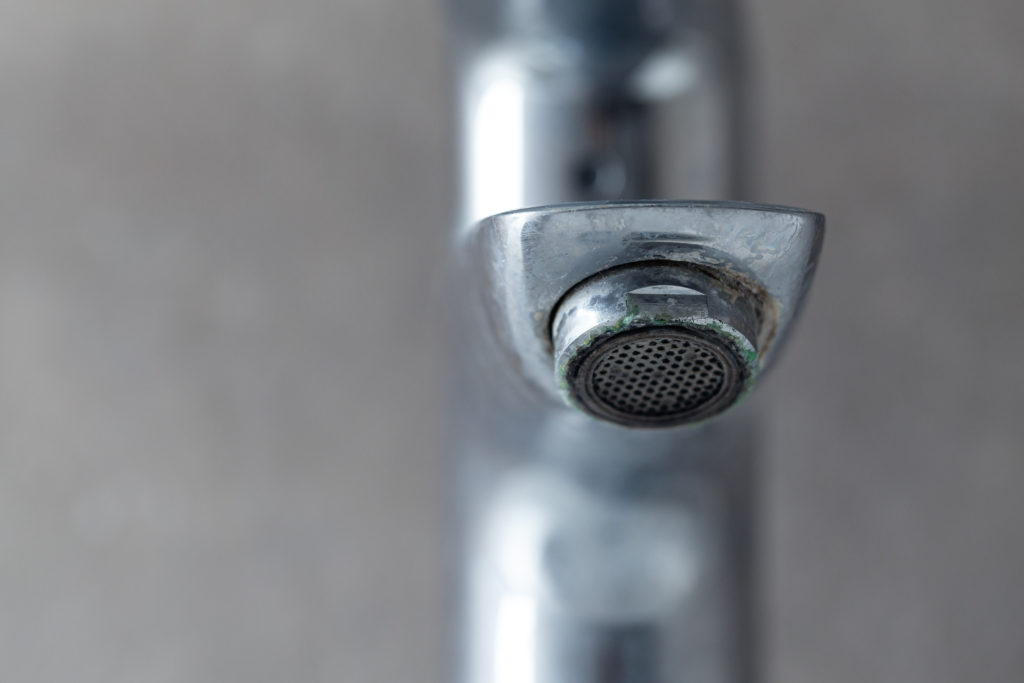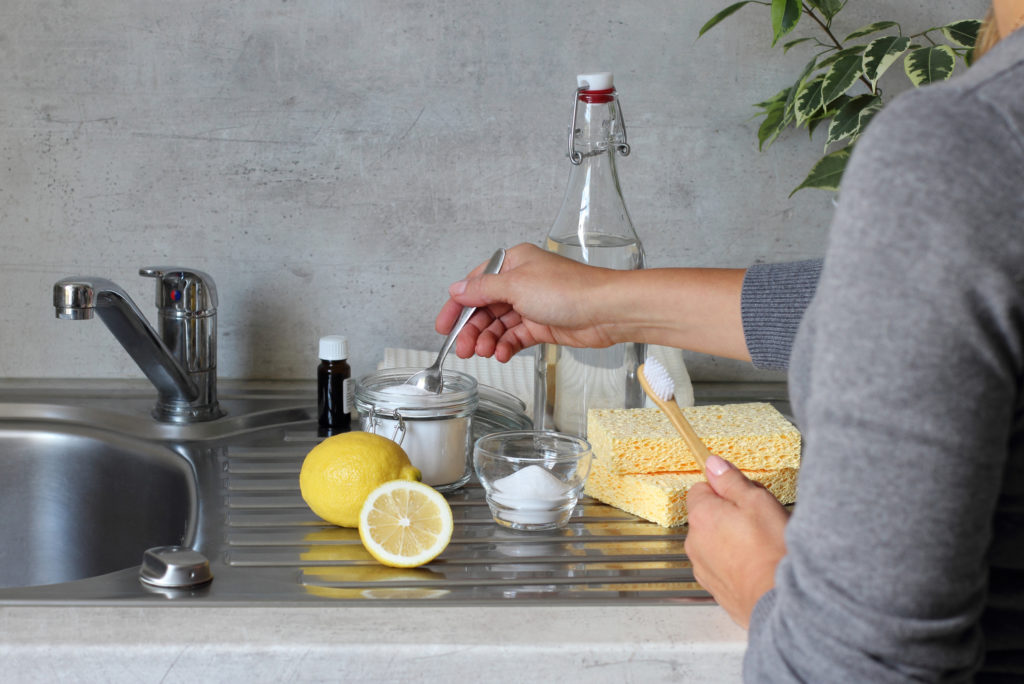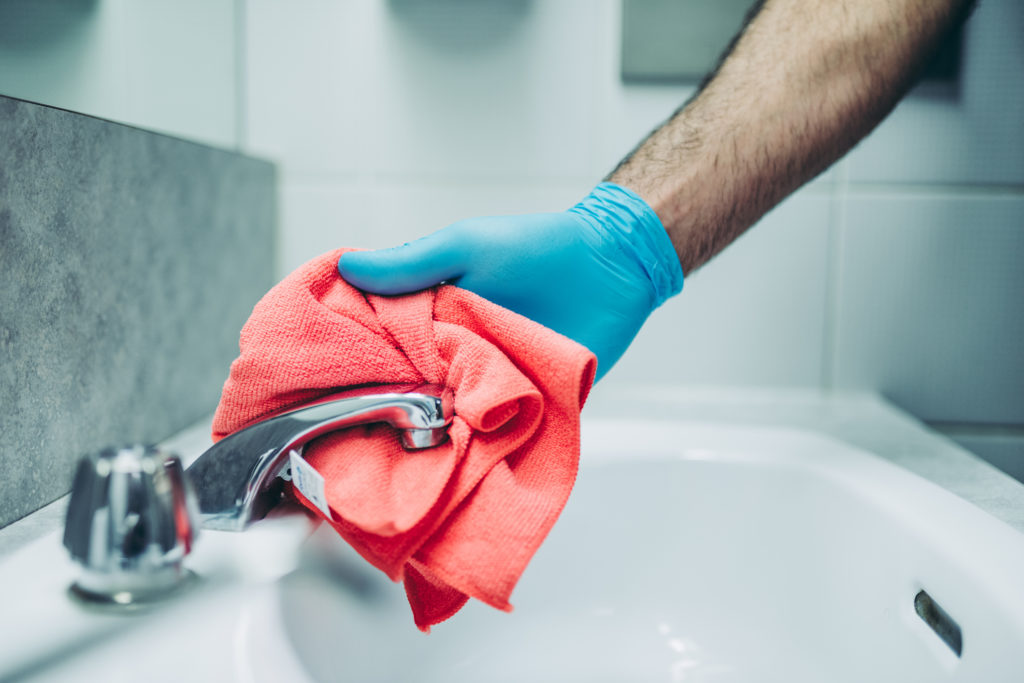
The Thames Water Crisis | How a Filter Can Help
11 July 2024
View PostPosted on 07 October 2022 5 min read
Everyone enjoys a sparkling bathroom and spotlessly clean kitchen. The problem is, especially in a hard water area, that hard water deposits can form incredibly quickly on any surface where water flows freely. This means your taps are under a constant barrage of limescale build-up, reducing their effectiveness and looking unsightly.
Sadly, hard limescale is very difficult to remove without the use of cleaning solutions. In this helpful guide, we’ll show you how you can turn the tide on this stubborn menace with a range of tap cleaning tips and also fantastic permanent options to banish calcium carbonate from your home once and for all.
But first, we’re heading back to basics to understand the root cause of limescale.
Limescale, or calcium carbonate, is a stubborn, chalky deposit that builds up in and around sources of water in hard water areas. At home, it is most commonly found in your kettle, on your taps, your shower heads and even on shower screens when hard water runs down them.

As the build-up of limescale is more prevalent around hot water appliances, you’ll often find that it appears quickly in your kettle, hot water taps and showers.
Limescale is not a dangerous substance, so there’s no need to worry. However, it is unsightly, hard to shift and can severely impact the performance of your appliances, pipes and taps, especially if you live in a hard water area.
In the UK, even in the hardest water areas of Ipswich and Hull, tap water is perfectly safe to drink.
There are a number of limescale removers on the market that are effective in removing even the most stubborn of deposits. Alternatively, you can use a natural remedy like lemon juice or white vinegar.
Some taps will be harder to clean than others, so follow these helpful tips to ensure your taps are sparkling clean.
Boiling water taps have become increasingly popular in homes across the UK – thanks to their convenience and often super-stylish design.
And as we know, limescale builds up much more quickly around appliances that use hot water, meaning your boiling water tap could be at risk of clogging up with limescale at a faster rate than a standard hot/cold water tap.

Thankfully, your boiling water taps can be cleaned in the same way as their counterparts – the only key difference being that you should make sure the tap is completely cool before attempting to clean it, avoiding any nasty scalds.
From there, you can use some of the ideas below.
You can buy a wide variety of specialist limescale-removing (descaling) cleaners from the supermarket, hardware store or online. Many of them make confident claims about removing limescale effortlessly.
It’s a good idea to read user reviews online to find out how effective people have found the products in practice. Most of these products contain some type of acid that reacts with the built-up calcium carbonate to dissolve it.

Follow the instructions carefully when you apply and rinse these products. Use and store them out of the reach of children: these cleaners can be harmful if you or anyone else gets them on skin or in the eyes.
Ordinary vinegar or lemon juice are naturally acidic, which means you can use them to remove limescale from taps. Many people prefer to use white (rather than malt) vinegar for cleaning which is readily available in most supermarkets and home stores.

Vinegar has a pungent smell so you’ll need to rinse it thoroughly and you might want to air the room afterwards. Lemon has a zingy, pleasant scent, but it’s more time-consuming and expensive to squeeze fresh lemons to produce enough juice for cleaning.
The challenge is to keep the vinegar or lemon juice on the tap for long enough so that it can do its work. This can be tricky for vertical and underneath surfaces – making taps one of the hardest things to clean effectively at home.
If you live in a hard water area (use our hard water checker to find out) then we’re sorry to say that limescale will build up over time – and the only way to deal with it is to keep on top of your cleaning routine, or install a water softener in your home.
A water softener is designed to remove calcium and magnesium from your water supply, the two minerals that contribute to hard water. Using softened water eliminates limescale and prevents the build-up of limescale on your taps.

That’s because softened water doesn’t contain the residues and deposits that cause limescale build-up from hard water. Over time, softened water flowing through your taps will also break down existing limescale. You won’t need to keep on descaling your taps with chemicals or natural acids, so they’ll stay shiny and fresh.
You could also take a look at a water filter which allows you to keep your ordinary water supply, with a dedicated filter unit.
If you’d like to learn more about how softened water could help your home, get in touch with the Harvey Water Softeners team today!